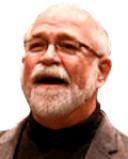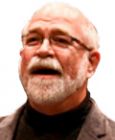Fantasies
Once Again, the Paranoid Style
Fear, distrust, disgust, and resentment as fantasy entertainment.
Posted April 2, 2023 Reviewed by Hara Estroff Marano
Key points
- American history abounds with examples of conspiracy theorizing.
- Conspiracy theories have often targeted newcomers and outsiders, especially racial and ethnic and religious minorities.
- Fantasies of sexual menace often fueled American conspiracy theories.
We may believe that we live in a rare interval where suspicion and mistrust threaten our national emotional equilibrium.
The evidence is easy to list. As hurricane Irma bore down on Florida, one popular radio fabulist insisted that storm forecasters were perpetrating a hoax designed to frighten coastal residents into accepting a malicious theory about planetary warming. (He issued this warning just before evacuating his residence in Palm Beach.) Another prolific conspiracy theorist, now awarded plumb Congressional committee appointments, spread the meme that Jewish-owned space lasers had started forest fires, that terrorists did not crash a plane into the Pentagon on 9/11, and that the Covid vaccine caused a near-death experience of a Buffalo Bills defensive safety.
Fringe ideas like these have moved toward acceptability. For example, more than half of Americans recently surveyed did not reject the claim that powerful interests operate a worldwide Satanist pedophile ring out of a pizza parlor in a Washington, D.C. neighborhood. A pizza parlor!
Oh yes, and the last Presidential election was “stolen.”
However laughable and weird, tens of millions agreed, and a couple of thousand of the most fervent among them stormed the United States Capitol in a real-life insurrection.
Fantasy as Entertainment
The conspiracy theories currently circulating are all but indistinguishable from the premises of popular thrillers. To name an entertaining few: lookalike pod-people have seized a small town. A scholar discovers a cabal of murderous Illuminati who have infiltrated the Vatican. The stunning women of a New England village are uncovered as androids. An amnesiac assassin flees the secret agency that created him. The Mars mission (or the Moon landing, take your pick) are deepfakes. The President’s psychoanalyst takes flight when foreign agents pursue him. And, lest we forget, “soylent green is people!”
Pleasant and Not So Pleasant Conspiracies
Closer to our hearts and hearths, we share ancient stories and still reenact them in our national liturgical holidays. A plus-sized elf bearing gifts squeezes down our chimneys to brighten the darkest night of the year. A magical bunny brings kids chocolate eggs to usher in spring. Witches and goblins haunt the harvest season. We wink at each other as co-conspirators for children’s delight. Thomas Henricks, the sociologist of play, calls these celebrations “pleasant conspiracies.”
Not always so pleasant, but even deeper as fantasies, as Henricks points out, compelling online video games create richly realized alternative realities, “as if” worlds “just beyond the borders of ordinary functioning.” The games allow players to take on outsized identities, and players’ avatars offer strengths unavailable and mastery that is elusive in real life. And their scenarios create a moral structure that generates a rich pantheon of heroes and villains, the Good who battle valiantly against the Evil.
It’s no wonder that the games’ devotees now number more than a billion worldwide. Most, Henricks observes, will “keep fantasies in their proper place.”
Conspiracy Theorizing and Catastrophizing Sink Deep Roots in American History
In the pursuit of fun, movie plots, and video game settings draw from a deep reservoir of imagination. But in a pernicious twist, so do the conspiracy theories that now bedevil our politics as a pitched struggle of the righteous against the corrupt.
This is no recent cyberspace phenomenon, as it happens. American political movements have dreamed up and deployed conspiracy theories from the very beginning.
Historians of the late colonial era, for instance, have explored the rumors and accusations that targeted King George III, much of it fueled by a stark sense of betrayal that newspaper writers phrased in surprisingly Freudian terms: the British Father and his mother country had abused and abandoned his American children. The language that expressed a “predilection for conspiratorial thinking” proved so intense and extravagant, in fact, that one historian, Gordon Wood, was prompted to contend with a basic question: “Were the American Revolutionaries mentally disturbed?”
Another scholar, Richard Hofstadter, carefully traced the “paranoid style” in American political discourse from the late 18th century until the 1960s. He picked the word style purposely, because these hysterical outbursts were not so much a connected lineage as they were evidence of a recurring anxiety and resentment born of isolation, that, often for political gain, exploited widespread dread of encompassing treachery and apocalyptic fear of replacement by dark forces and (too often literally) of dark people.
Recurring Panic
And thus, the roll call of resurfacing panic in American history includes, in the 1790s, the belief that nefarious European Illuminati would bring the Antichrist to American shores. In the 1820s and 1830s, Protestant militants denounced Masonic lodges as “Hell’s Masterpiece.” In 1834 no less a figure than Samuel F.B. Morse, the future inventor of the telegraph, claimed that the Austrian House of Hapsburg would conspire with Jesuit agents to install a Catholic emperor in North America. In 1836 Maria Monk, published a titillating exposé that claimed to have discovered a nest of baby-killing priests. (She died 13 years later while imprisoned as a prostitute and pickpocket.) In 1855, so the conspiracy theorists alleged, “secret cabals of the international gold ring” would capture the American financial system.
And So On
Dependably in the following century and three quarters, the fearful and the fundamentalists who couldn’t keep fantasies in their place trumpeted threats from newcomers and outsiders.
Suspicion fell on the succession of Blacks, Jews, Irish, Germans, Italians, more recently Latinos and Asians; perennially on Communists and labor organizers; and now on civil rights and peace activists, rock musicians, fashionistas, and other trendsetters.
A strong current of sexual menace also ran alongside catastrophe in every one of these professed threats as titillation became a form of entertainment. And so today, unsurprisingly, the rainbow panoply of sexual minorities absorbs the assaults of alarmists who are tingled by their crusade.
Somehow, our pluralistic democracy has thrived despite demonic threats. But as Hofstadter concluded 60 years ago, the paranoid style, recurrent in the American past, imposed suffering not just on those self-anointed warriors who meant to come to our rescue but also on the rest of us, who have so often been obliged to dodge their harangues.
It would be tempting to call this paranoid style a form of “dark play.” But the style of true play trends toward freedom, release, mutual delight, and balance. Play, by definition, is never dark.
.jpg?itok=ZT-IAdKc)
References
Thomas Henricks, “Why People Embrace Conspiracy Theories” The Pathways of Experience, Psychology Today (April 3, 2021); George Michelsen Foy, Shut Up and Listen!, “Why are the UN’s Black Helicopters Targeting Me? How Conspiracy Theories May Flourish in an Environment of Informational Stress,” Psychology Today, (March 27, 2023).
Richard Hofstadter, “The Paranoid Style in American Politics,” Harper’s Magazine (November, 1964); David Brion Davis, The Fear of Conspiracy: Images of Un-American Subversion from the Revolution to the Present, (1971); Gordon S. Wood, “Conspiracy and the Paranoid Style: Causality and Deceit in the Eighteenth Century,” William and Mary Quarterly, vol. 39, no. 3, (1982); Paul Krugman, “The Paranoid Style in Conservative Politics,” The New York Times, (September 9, 2017).
Ray Allen Billington, “Maria Monk and her Influence,” The Catholic Historical Review, (October, 1936).




